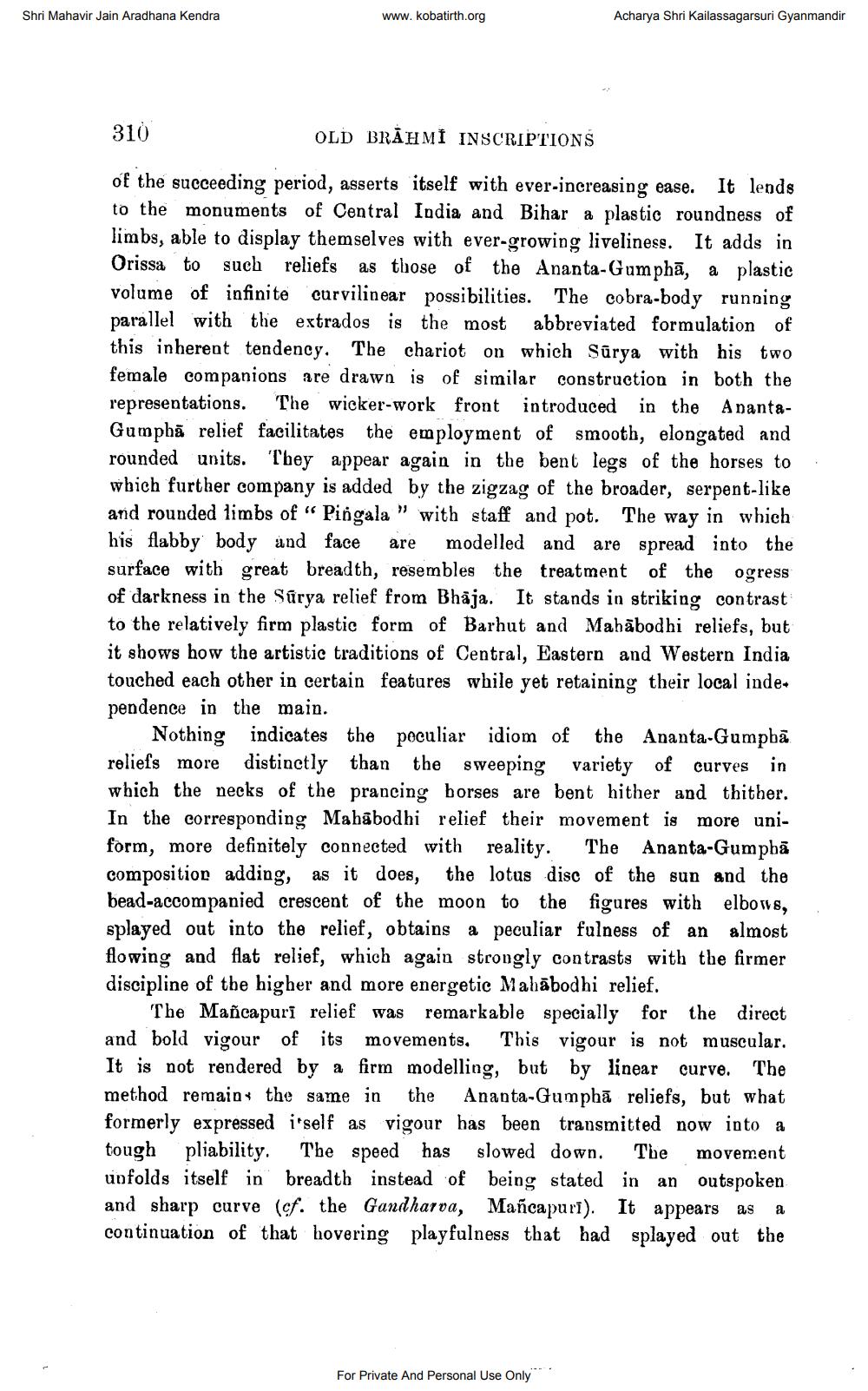________________
Shri Mahavir Jain Aradhana Kendra
www.kobatirth.org
Acharya Shri Kailassagarsuri Gyanmandir
310
OLD BRAHMİ INSCRIPTIONS
of the succeeding period, asserts itself with ever-increasing ease. It lends to the monuments of Central India and Bihar a plastic roundness of limbs, able to display themselves with ever-growing liveliness. It adds in Orissa to such reliefs as those of the Ananta-Gumphā, a plastic volume of infinite curvilinear possibilities. The cobra-body running parallel with the extrados is the most abbreviated formulation of this inherent tendency. The chariot on which Sürya with his two female companions are drawn is of similar construction in both the representations. The wicker-work front introduced in the AnantaGumphā relief facilitates the employment of smooth, elongated and rounded units. They appear again in the bent legs of the horses to which further company is added by the zigzag of the broader, serpent-like and rounded limbs of " Pingala " with staff and pot. The way in which his flabby body and face are modelled and are spread into the surface with great breadth, resembles the treatment of the ogress of darkness in the Sürya relief from Bhāja. It stands in striking contrast to the relatively firm plastic form of Barhut and Mahābodhi reliefs, but it shows how the artistic traditions of Central, Eastern and Western India touched each other in certain features while yet retaining their local inde. pendence in the main.
Nothing indicates the peculiar idiom of the Ananta-Gumpbā reliefs more distinctly than the sweeping variety of curves in which the necks of the prancing borses are bent hither and thither. In the corresponding Mahābodhi relief their movement is more uniform, more definitely connected with reality. The Ananta-Gumpbā composition adding, as it does, the lotus disc of the sun and the bead-accompanied crescent of the moon to the figures with elbows, splayed out into the relief, obtains a peculiar fulness of an almost flowing and flat relief, which again strongly contrasts with the firmer discipline of the higher and more energetic Mahābodhi relief.
The Mañcapurī relief was remarkable specially for the direct and bold vigour of its movements. This vigour is not muscular. It is not rendered by a firm modelling, but by linear curve. The method remain the same in the Ananta-Gumphā reliefs, but what formerly expressed itself as vigour has been transmitted now into a tough pliability. The speed has slowed down. The movement unfolds itself in breadth instead of being stated in an outspoken and sharp curve (cf. the Gandharva, Mañcapuri). It appears as a continuation of that hovering playfulness that had splayed out the
For Private And Personal Use Only




